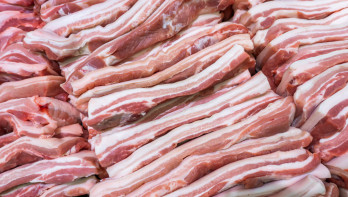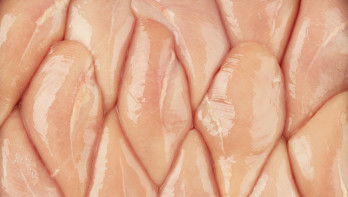News Meat
'Pattern of meat consumption is changing in China'
The pattern of meat and fish consumption is changing in China. An important trend is the shift from quantity to quality. "How to eat well instead of how to eat more has now become the focus of many Chinese consumers," said Chenjun Pan, senior analyst Animal Protein for RaboResearch. Companies active in the Chinese market in the field of animal proteins are advised in a new report by Rabobank to respond to the changes and meet the demands of 'modern Chinese consumers'.
Meat consumption per capita has more than doubled since the mid-1990s from 35 kg to 72 kg in 2023, as stated in the report. Factors contributing to this include the two decades of tremendous economic growth in China, market liberalization, and digitalization.
For over a year, there has been an oversupply of meat in China, resulting in low prices and supply chain issues in managing the supply, according to the report. RaboResearch expects that to balance this, production in the country will decrease and prices will rise. Analysts emphasize the importance of looking beyond the current situation and aligning business strategies with long-term changes in the consumer market.
End of one-size-fits-all products era
Although economic growth has slowed down and Chinese people need to tighten their belts in some areas, food expenditures are currently holding steady. According to Pan and analyst Consumer Foods and Beverages Rena Ma, the focus has shifted from quantity to quality. The era of one-size-fits-all products is over, they conclude.
China's population is aging, and there are more smaller households. While households of three people remain the standard, there are more households consisting of one or two individuals. This has an impact on meat consumption and the types of products chosen. Smaller households without children are more focused on convenience. Ready-to-eat products, eating out, and online ordering have seen significant growth in China in recent years, according to the analysts.
Where pork traditionally was the dominant choice, there is an increasing preference for poultry, beef, and seafood due to their perceived health benefits, note the analysts. Additionally, the consumption behavior of the elderly is changing due to online grocery shopping, meal delivery, and ready-to-eat meals.
Four trends to capitalize on
RaboResearch identifies four key trends for the consumption of animal proteins in China. The first is that consumers are increasingly seeking products that offer the best value for their money. Experience is also becoming more important. Health is also playing a larger role in food choices. Finally, distribution channels are evolving, providing more access to various animal protein products.
To benefit from these trends, companies producing animal proteins, according to RaboResearch, should focus on value instead of volume and focus on poultry, beef, and (high-quality) seafood. Companies are also advised by the analysts to collaborate more closely with foodservice and retail to meet consumer needs and secure margins. Furthermore, Chinese consumers are becoming more aware of sustainability. Collaborations with retailers and foodservice can help achieve sustainability goals. The analysts also observe a trend towards standardization of food processing and preparation with the emergence of restaurant chains. This offers opportunities for companies in the animal protein sector to capitalize on with their products and processes.



